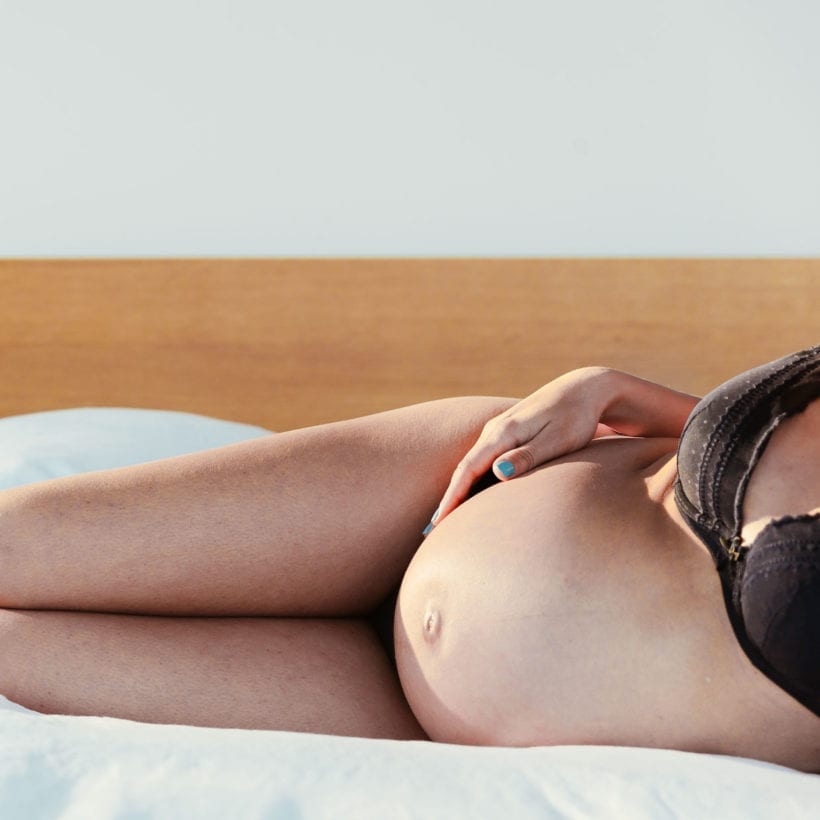The ground-breaking postpartum depression (PPD) drug will be available next month. Announced by the FDA in March, brexanolone, which will be distributed as Zulresso by Sage Therapeutics, is the first treatment specifically for PPD.
In a regular condition, one in seven women experience PPD, according to the American Psychological Association.
“Postpartum depression may manifest as postpartum blues consisting of mild depressive symptoms that are generally self-limited, or more severe syndromes of minor or major depression. These symptoms can start before the delivery and during pregnancy. Others may get a variation of these symptoms … immediately after delivery up to 12 months,” says Adeeti Gupta, M.D., founder of Walk In GYN Care.
And if the condition worsens past those “baby blues,” (mood swings that up to 80 percent of moms experience after birth, but last no more than two weeks and go away on their own) the number of lanes for treatment was limited — until now.
https://www.instagram.com/p/BmJ3KMzFRZw/
Who is prone to PPD?
According to Gupta, all women who give birth are at risk. But some pre-existing conditions can increase that risk factor. “Women who have a prior history of depression are at a higher risk due to the stress imposed on a woman’s body and mind by the acute and rapidly changing hormone levels, sleep and activity changes and the stressors placed on the woman by all the activities involved in taking care of a newborn,” she says.
While there is no innate cause for PPD, symptoms can start during pregnancy. And it is thought that the hormonal drop immediately after birth — coupled with the sleep deprivation a new mom experiences — could have some effect on the brain.
“Symptoms can range widely from just sad thoughts, excessive crying, mood swings, [and] sleeplessness, to extreme thoughts of self-harm and being unhappy with the baby,” Gupta says.
https://www.instagram.com/p/BihkAfPhUTe/
What are the other types of treatment?
Historically, PPD is treated with therapy and medication, like antidepressants. “[The] best treatment is therapy along with good social and family support,” says Gupta. “Taking care of nutrition and sleep deprivation along with supportive therapy will help tremendously.”
There are two forms of therapy thought to help women with PPD: Interpersonal therapy (IPT) and cognitive-behavioral therapy (CBT). IPT focuses on addressing the connection between relationship and mood, whereas CBT helps patients identify negative thoughts and make changes to reduce stress.
In addition, a doctor may prescribe medication, says Gupta. “The medications are used as a second-line treatment,” she says, naming Paroxetine and Sertraline as the some of the most common. But these medications, which are selective serotonin reuptake inhibitors (SSRIs) that increase serotonin levels in the brain, can take four to six weeks to see effects.
https://www.instagram.com/p/Bw9vM-DBlZI/
How is Zulresso different?
Zulresso is the first drug designed specifically to treat PPD symptoms. Administered in one dose, it is said to improve symptoms as early as 48 hours after completing the dose — a 60-hour continuous infusion.
“[Zulresso] is a rapidly acting medication that works by [sending] positive effects [to] the GABA receptors in our brain,” says Gupta. Essentially, brexanolone is a synthetic of allopregnanolone — a hormone produced by progesterone that may help with anxiety and depression — and after the hormone drop post-birth, brexanolone serves as a ‘reset’ for the brain. In two clinical studies performed by Sage Therapeutics, women with moderate to severe PPD experienced an immediate decrease in symptoms.
But Gupta says Zulresso is not readily available to everyone. “It will be accessible only at doctor’s offices or practices where there is a facility for intravenous infusion and observation,” she says. “Plus, [patients] need to have tried and failed other treatments [like therapy and SSRIs].”
And, it is estimated that the average cost per patient will be $34,000 before discounts, making it inaccessible to most — around 48 percent of lower-income mothers report experiencing PPD. Not included in the cost? That facility stays due to the risk factors: Patients who receive the dose are at risk of excessive sedation or sudden loss of consciousness, says Gupta. “Brexanolone is available only through a restricted program under a Risk Evaluation and Mitigation Strategy (REMS) called ZULRESSO REMS,” she adds.
Roadblocks aside, Gupta is positive. “I think this is a good step,” she says. “And hopefully this can avoid the last step of electroconvulsive therapy [formerly known as electroshock therapy, where electric currents are passed through the brain while the patient is under anesthesia], which is used as the last resort for severe and treatment-resistant depression.”







